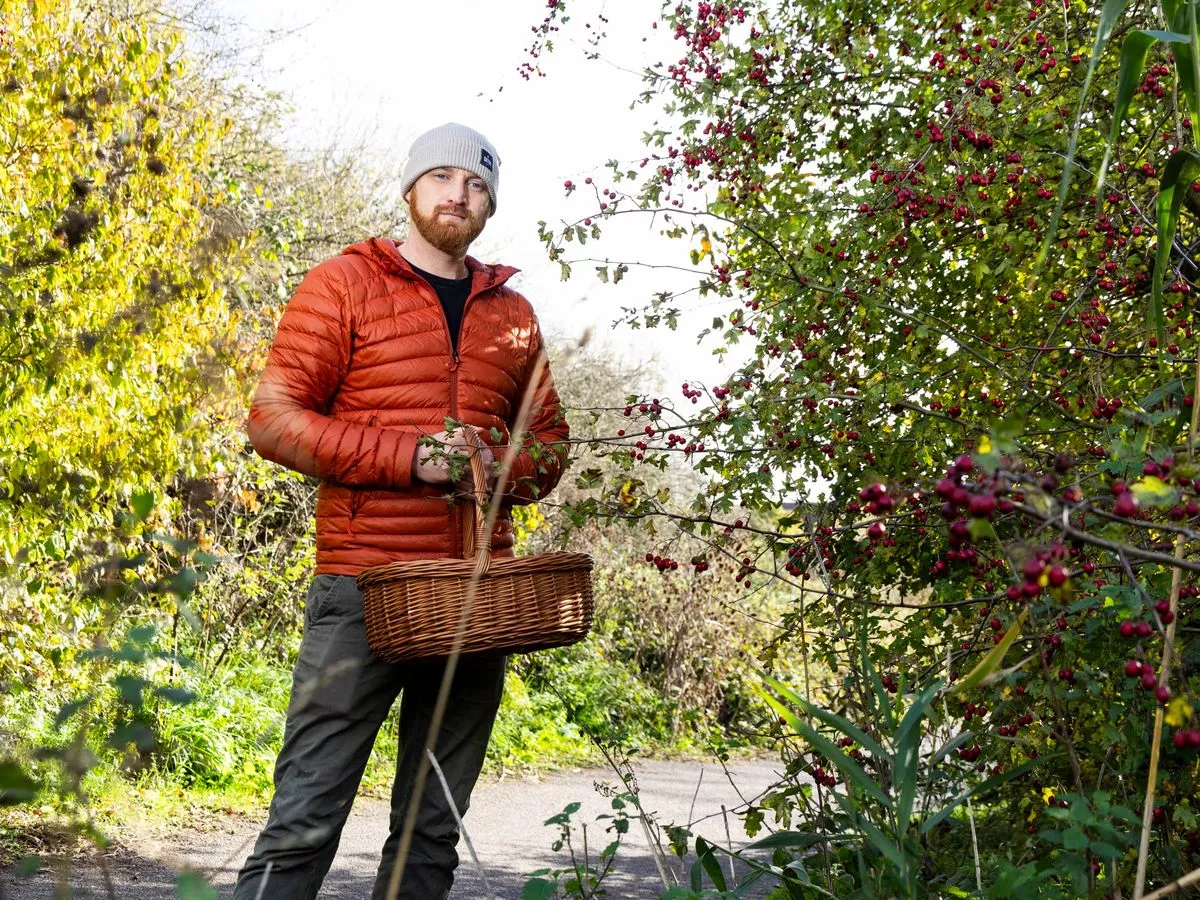Copyright dailyrecord

A man saves £200 on his monthly food shop by foraging for acorns, nettles, wild mushrooms and dandelions. Lewis Pidoux, 41, says he has fond memories of picking blackberries with his dad as a boy and he got hooked on the hobby in his early 20s as a way of fuelling long-distance hikes. These wild ingredients now make up about a fifth of his diet - and his inventive meals include nettle pakora and acorn pancakes. Having recently gone part-time in his job as a chef to focus on growing his YouTube channel, the green-fingered Bristolian aims to make foraged food nearly 100 per cent of his overall diet. He views foraging as a way to "connect with nature" and claims he saves £200-a-month on his food shopping at Aldi during spring - and £100 in cooler months when he can't forage. Lewis says he spends £80-a-week on his food shop. The Toby Carvery worker said: "Foraging is seen nowadays as a niche hobby but it's the way our ancestors survived, so I think there's a deep need to do it. It's part of us all. Off the top of my head, I probably save about £100 a month. "Some of the fruits that I forage can be very expensive if you get the ones in the shop. Some of the mushrooms, like porcinis, can be really expensive. "You could pretty much have most of your diet being foraged if you really wanted to but that would be a full-time job." Lewis has been foraging for around two decades and started posting on YouTube six years ago in a bid to educate people on wild foods , but he noticed a spike in interest around the time of the pandemic. Lewis said: "People had time off work so they were getting a bit more interested in being outside. "I also think there was that slight fear of food scarcity and people did genuinely wonder what would happen if the shops ran out of food." A typical breakfast for Lewis could be acorn pancakes or a dandelion smoothie. Sea beet frittatas and wild mushroom broth are among his lunch-time favourites. For dinner, he often cooks up a chickpea and nettle curry or makes southern fried 'chicken of the woods' - using a "bright orange, yellowy mushroom that tastes exactly like chicken and has the same texture". Despite a recent warning from sustainability chiefs that TikTok-inspired 'middle-class foragers' were stripping forests bare and risking their own health, Lewis reckons a 'mixed demographic' is behind the recent trend. "I've not seen an increase in middle-class foragers", Lewis said. "It's probably been an increase in younger people getting into foraging, which is quite good." He says foragers should "only take as much as you need", adding: "I go out with a basket and just take enough for a few days". He said: "Generally, foragers are respectful with nature. Our wild spaces in the UK are being destroyed which I think is the bigger issue. "Some people say you shouldn't forage because it's dangerous or damaging but I think it's better to educate. "I think if you say 'don't do it', you create that divide between people and nature. I think they could even educate in schools about it." Lewis reminds beginners that uprooting protected plants is illegal, as is foraging on sites without permission from the landowner. And he warns new foragers that dangerous plants like giant hogweed - which can damage your skin even if you just touch it - should be avoided at all costs. "Take it slowly," he said, when asked to provide tips for budding foragers. Don't try and learn too much at once. It can be dangerous if you're trying to learn too many plants at once. "Pick two or three, learn everything about them, what they look like and if they have poisonous relatives. Go on guided tours and day classes. Read books from lots of different authors. "When I started foraging, I kept a journal. If you do that, each time you learn a new plant you can write it down. "Stay away from the carrot family until you're experienced because there are some really deadly ones in there. "Don't use plant-identification apps for foraging because they can be really dangerous. I've tested a few out and they can be really misleading. "I picked up hemlock water dropwort, a really deadly plant. A couple of drops of that can kill you. The app told me it was wild celery. "They look very similar. They're usually quite good at telling you which family a plant's in, but for the exact species, they're terrible. "I see on Facebook groups using Google Lens and saying 'I've picked this because my app said this' - but they're almost always wrong." In spring and summer, he sources his fruits and green vegetables entirely from the wild. Lewis only buys meat and root vegetables from shops during the hotter months while he goes foraging every other day. In the winter, he tries to use foraged ingredients as much as possible but sometimes has to buy nuts and seeds from shops when he cannot find them in the wild. His staple foraged ingredients include wild garlic, dandelions, nettles and mushrooms. Buoyed by the growth of his YouTube channel, Lewis is considering switching to a fully-foraged diet for a period of time. Lewis said: "I'm thinking about in the future doing a video on going for several months just eating foraged foods. "I would like to try that out. "You'd need to harvest a lot in the autumn to get through the winter, as our ancestors would have done."



